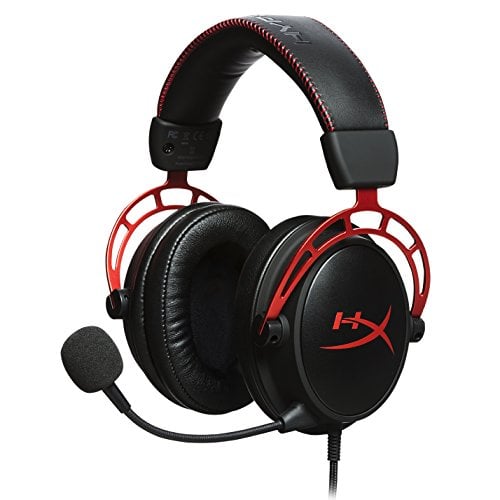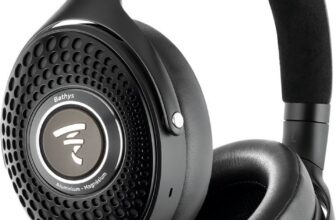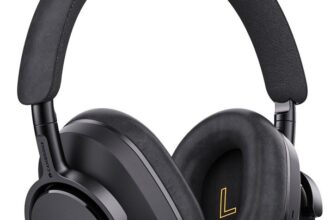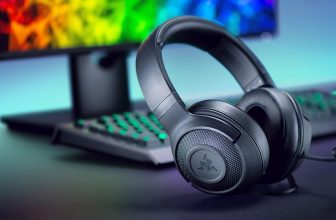Kingston HyperX Cloud Alpha Review: One iteration closer to Cloud Nine for Kingston

HyperX Cloud Alpha Review – FOR AS LONG as humankind has been able to pass an electrical current through a circuit board, we’ve been singing the praises of Kingston’s HyperX Cloud headset in its various forms. It began with QPad’s QH-90 in 2013, taking its cues from aviation headset design, and setting a new high bar for closed-cup gaming sound. Kingston bought the rights to that design and iterated on it with the Cloud and Cloud II, which didn’t reinvent the wheel but did find sonic improvements, and introduced new features. What can the Cloud Alpha do to make good on its prestigious name, then?
Table of Contents
Even better sound. Duh. What’s more interesting than that non-revelation is how the Alpha does it: using separate chambers within each earcup for bass, mid, and high frequencies, giving each the room to resonate individually without distorting. In truth, many high-end gaming headsets, and headphones aimed outside the gaming space, adopt this principle, but the execution of it here yields audible benefits.
The frequency response on offer here is absurd: 13Hz-27kHz, one of the widest we’ve ever tested in a gaming product. While you won’t be able to magically hear below 20Hz, no matter how diligently you’ve worn foam earplugs at death metal shows, the increased headroom (and, um, cellar space?) above and below the audible 20Hz-20kHz range does matter. In that extra space are subharmonic frequencies that enrich the audible frequencies. In hi-fi salesman terms, that equates to extra “low-end power” and “sparkle.”
Elsewhere, it’s a case of the fundamentals done right. Comfort has long been a strength of the Cloud series— as you might guess from its name—and the Alpha is just as much of a pleasure to wear, despite gaining an extra ounce in weight over the Cloud II, probably due to the new chamber design. Comfort levels are noticeably improved over the Cloud II, but it’s nice to see an already high standard maintained in this new model, particularly as it sticks at the $100 price point.
We re glad to see that the cable is now detachable. After years of service, our Cloud II passed over to that great recycling plant in the sky when its cable died. But with this model, a broken cable connection wouldn’t mean the death of the whole headset. It’s business as usual for the mic: detachable, covered in a generous memory foam pop guard, and offering decent noise-canceling. Apparently, this was a focus for Kingston when designing the Alpha, to the extent that it tuned the mic specifically to cancel the frequencies that Cherry MX mechanical switches produce, but to our ears, the result is about the same—still short of Sennheiser’s amazing quality, but better than most. The inline control sees a redesign, but we’re less impressed by its underwhelming plastic construction than the rest of the package. The double-sided volume scroll wheel is handy, but the mic mute switch is a bit sticky, and without a clip to keep it close by, it can get lost when your eyes are locked screen-ward.
If you’re still using a pair of Cloud IIs, you have no reason to panic about the advent of a new model. The improvements are small; significant enough that those without a decent headset have a more persuasive argument from Kingston than ever to invest, but not enough that the Cloud II is now obsolete. This isn’t an alpha that tries to neg you, or grunts obnoxiously after every deadlift at the gym, but nonetheless, it does exert its dominance at the $100 price point, and should thus be considered the go-to headset for anyone in need of an upgrade. -phil iwaniuk
Kingston HyperX Cloud Alpha Review
- Still well priced
- Still comfortable
- Flimsy inline control
Kingston HyperX Cloud Alpha Review: Specifications
| SPECIFICATIONS | |
| Driver Type | 50mm |
| Impedance | 65 Ohms |
| Design | Closed-back circumaural |
| Microphone Type | Noise-canceling electret condenser |
| Frequency Response | 13Hz-27kHz |
| Connection Type | 3.5mm |
| Cable Length | 1.3m + 2m |
| Weight | 10.5oz |












